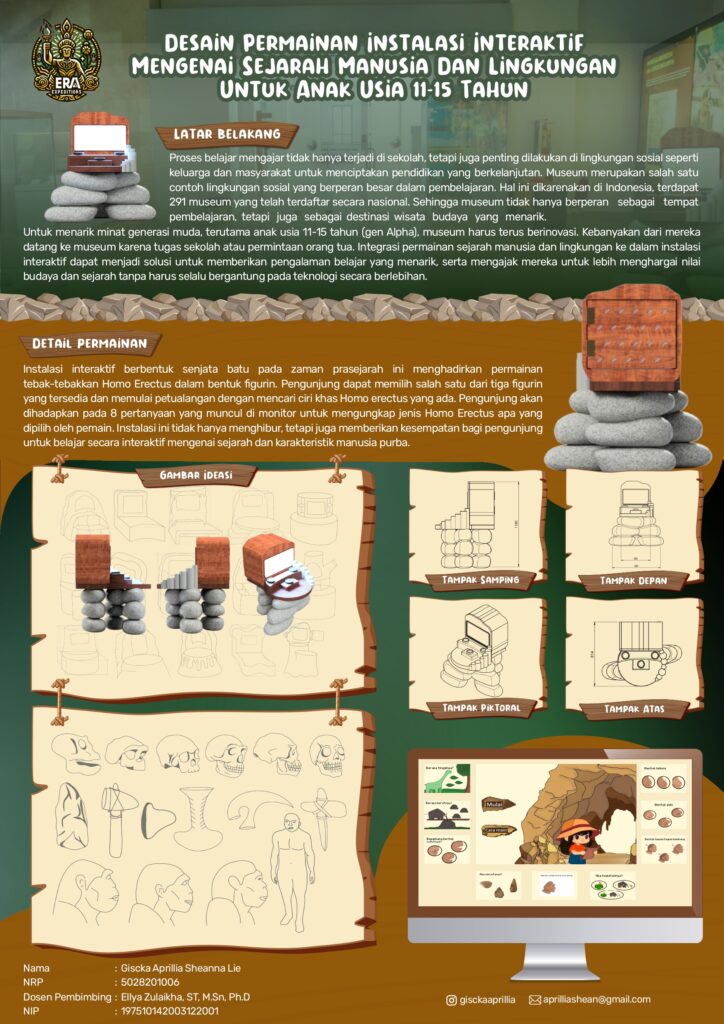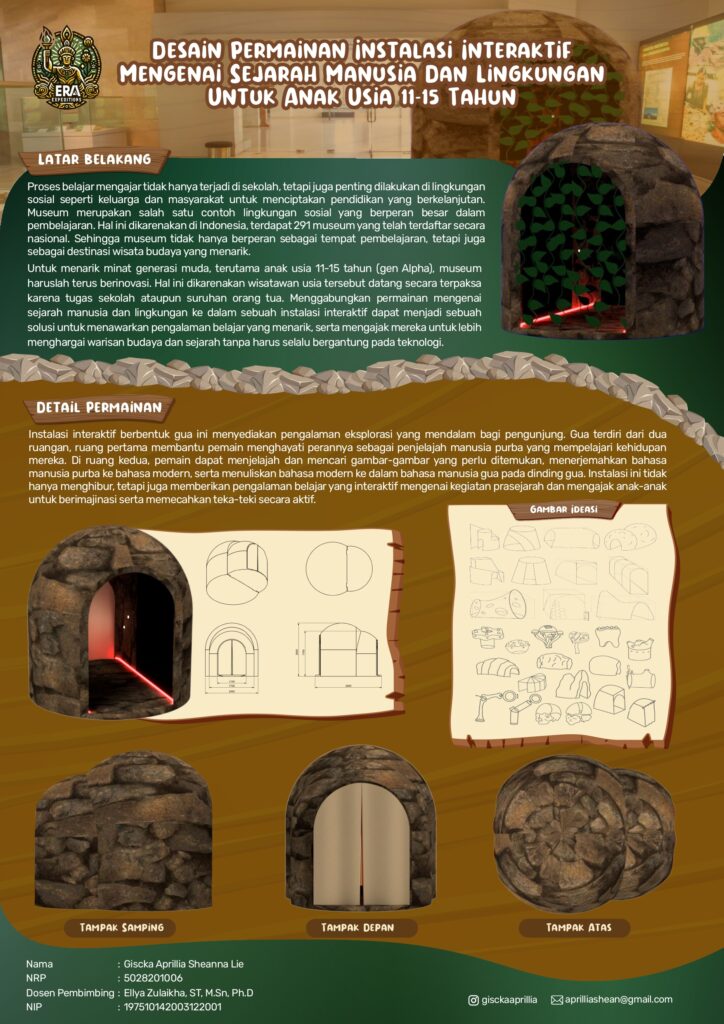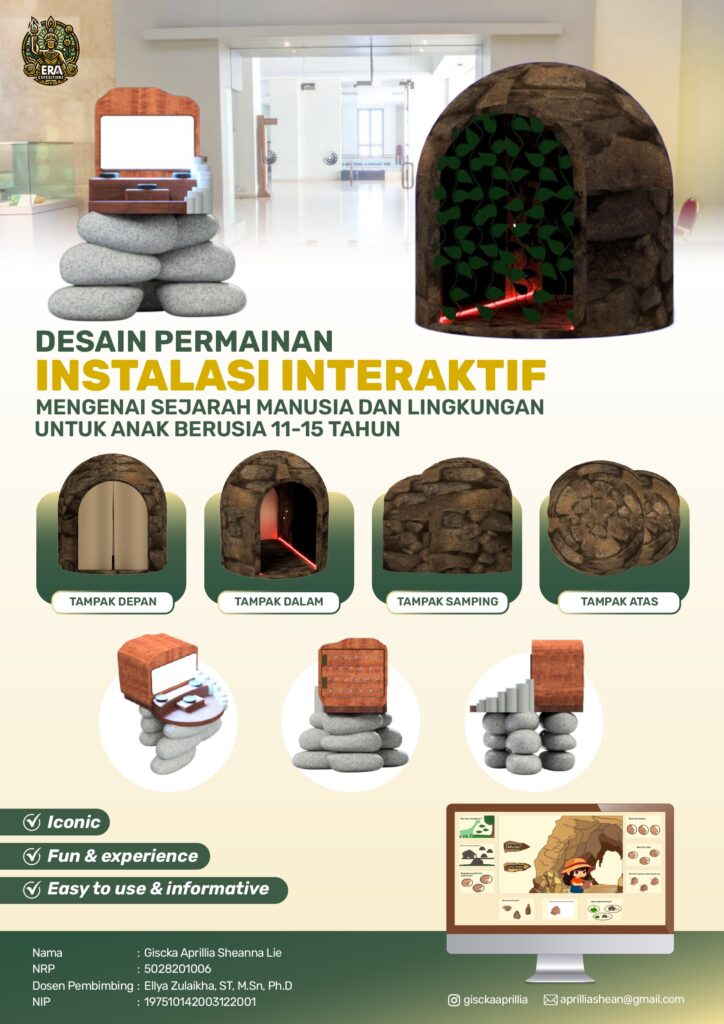Museums are often used as places for learning outside of school that provide ongoing educational experiences and connect with nature and the social environment. In Indonesia, there are currently 291 museums with accredited status spread across various regions. One of the large and popular museums in Jakarta is the National Museum, which had 523,141 visitors in 2022 and continues to see an increase. A significant portion of these visitors are student groups engaging in out-of-class learning. There are relatively few non-group visitors who come specifically to study history personally, particularly children aged 11-15, often referred to as Generation Alpha. Visitors are interested in technology-related topics, creating a more enjoyable atmosphere. Museums need to actively attract young visitors by creating interactive installations that capture attention. The design of interactive installations can utilize all five senses, aiding in the learning process about human historical life and the environment quickly and memorably. The research method involves analyzing existing products, identifying target consumers and appropriate learning approaches, brainstorming engaging game ideas, testing the product, and creating a model to be tested with users. This process results in the development of cave installations and Homo Erectus figurine installations that maximize user interaction by integrating touch, sight, hearing, smell, and gaming technology.



